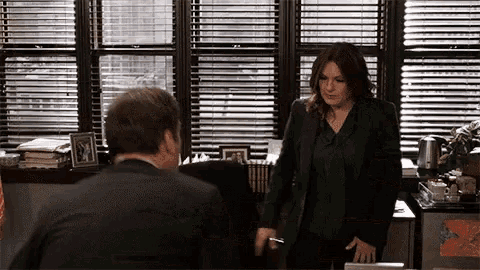The Complete Guide to Avoiding a Cash Gap
-
Galina Ostrachinyna
Copywriter Elbuz
How often have you had times in your business when your account ran out of money earlier than it should have? This is not just a misunderstanding, but a real threat that could be fatal for the company. The cash gap is a problem familiar to every entrepreneur. The reasons can be very different: delayed payments from customers, unreasonable expenses or sudden changes in the market. What should you do to protect your business and avoid this scourge? Understanding the root causes and consequences is the first step to a solution.

Glossary
🏦 Cash gap - a situation when the company's accounts do not have enough funds to cover current obligations.
📉 Liquidity - the company's ability to quickly turn over assets in money to fulfill financial obligations.
📅 Cash flow - cash flow of the company over time, including income and expenses.
📊 Forecasting cash flows - a method for estimating future cash receipts and payments to prevent cash gaps.
🌐 Financial management - management of company finances for ensuring its solvency and sustainable development.
🔄 Accounts receivable management - the process of control and accelerating debt repayment by the company's clients.
📝 Budgeting - the process of financial planning in a company , including forecasting income and expenses.
📈 Current ratio - financial indicator, assessing a company's ability to meet short-term obligations.
📄 Financial report - a document reflecting the financial the state and results of the company’s activities for a certain period.
👥 Suppliers - companies or individual entrepreneurs, that provide necessary goods or services for a business.
⏳ Long-term liabilities - financial liabilities of the company, repayable after twelve months or more.
💰 Financial reserves - money set aside to cover unexpected expenses or cash gaps.
🏷 Credit line - an agreement with the bank on the ability to borrow money within a certain limit as needed.
🔍 Audit - independent verification of a company’s financial documentation to confirm its reliability and accuracy.
💸 Operating expenses - regular expenses of the company for conducting core activities, such as wages, rent, utility bills.
🔧 Crisis management - strategies and actions, taken to bring the company out of a difficult financial situation, including a cash gap.
Avoiding the Cash Gap: Personalized Approaches experience
A cash gap is a temporary shortage of funds when a business cannot cover its mandatory expenses in a timely manner. I encountered this situation several times in the early stages of running my marketing agency. Let me share my observations and solutions.

Reasons for the box office gap
In my opinion, the main reasons for the cash gap are:
🛑 Inconsistency in payment terms: Receipts from customers often are delayed while payment of bills requires accuracy. For example, once a client delayed payment for services provided by three weeks, when I needed to pay salaries to employees.
🛑 Unexpected Expenses: Sometimes unexpected expenses may arise that were not planned for. For example, purchasing new office equipment. I once spent a client's prepayment on purchasing a coffee machine, thereby putting myself in an awkward position because the second payment was late.
🛑 Lack of a reserve fund: Business owners do not always create reserve funds in case of unforeseen situations. I learned this lesson the hard way when I had to take out a loan to cover expenses.
Examples from practice
Example from my experience:
Having received an advance payment from the client, I immediately decided to invest it in improving the office infrastructure. We bought a new coffee machine because we hoped that the remaining funds would arrive soon. However, the client delayed payment, and I was faced with a situation where there was not enough money to pay the team’s salaries.

Social and public consequences
When a business is unable to meet its financial obligations, it negatively impacts employees and partners. In my case, late payment of salaries led to low team morale. The company’s reputation also suffered because they were unable to fulfill agreements with suppliers.
How to prevent a cash gap
I recommend three basic strategies for avoiding a cash gap:
- Plan Cash Flows: Using financial forecasts helps identify possible periods of cash shortages.
- Create emergency funds: Having an emergency fund will help you cover unexpected expenses.
- Client monitoring: Careful assessment of clients' payment discipline will help avoid delays.
Recommendations for practice
Checklist:
👍 Useful to do:
- Create financial forecasts.
- Form reserve funds.
- Assess the solvency of clients.
.gif)
👎 It is not recommended:
- To completely spend prepayments.
- Ignore the need for reserves.
- Rely on loans as the main way to cover gaps.
I have learned that proper cash flow management is critical to any business. By implementing these strategies, you can prevent a cash gap and strengthen your company's financial stability.
Main causes of box office gaps
When I first encountered with the concept of a cash gap, I had no idea how many problems it could bring. A cash gap is a temporary lack of funds in a company's account, which can arise for various reasons. And in my experience, I have repeatedly seen how mistakes in budget planning lead to serious financial difficulties.
Errors in budget planning are the main reason for the cash gap. I've seen business owners schedule regular payments incorrectly or not schedule them at all, resulting in unexpected expenses. For example, one of my clients incorrectly calculated the purchase of goods, faced a large volume of illiquid products and, as a result, a cash gap.
Losing a major client can also seriously impact a company's financial stability. For example, one of my entrepreneur friends had a key customer who brought in an impressive portion of his revenue every month. When this client terminated the contract, the company was unable to find a replacement, with disastrous financial consequences.

Deferred payments
Another important factor is deferred payments. Often business owners agree on flexible payment terms with suppliers, but may not always follow these terms themselves. As a result, situations arise when the expected funds do not arrive in accounts. I often heard from colleagues that buyers ask for deferments and do not always pay on time according to documents, which creates cash gaps.
How to avoid a cash gap
Based on my experience, I can confidently say that it is important to plan your budget carefully and keep track of your cash streams. Here are some tips that have helped me:
💡 Review your budget and adjust it regularly: Make sure your schedule payments are current and accurate.
💡 Create an Emergency Fund: This is a lifeline in case you lose a client or have an unexpected expense.
💡 Automate accounting and management: Using accounting programs helps you avoid mistakes and control financial flows.

Below, summing up, I want to share a table with useful and unsuccessful practices so that you could avoid common mistakes:
| Practice | Helpful | Unsuccessful |
|---|---|---|
| Budget planning | Regular reviews and adjustments | Irrelevant and static plan |
| Reserve support | Availability of a reserve fund | Complete absence of an airbag |
| Accounting and automation | Using modern accounting systems | Manual accounting or relying on random decisions |
| Agreements with clients | Maintaining relationships and meeting payment terms | Ignoring customer requests for delays |
| Cash flow control | Constant monitoring and management | Lack of control and analytics |
Therefore, I strongly recommend you to consider the above points to avoid cash gaps and ensure the financial stability of your business.
How to estimate the size of the cash gap
In one of months, I was faced with a situation where my company had a significant cash gap due to unexpected expenses and delays in payments from clients. In order to correctly assess the scale of this problem, I used the following formula:

ODS = DS + P - R
- 🟢 DS - cash balance at the beginning of the selected period, for example, a week or a month.
- 🟢 P - receipts for the same period.
- 🟢 R - regular expenses.
- 🟢 ODS - cash balance at the end of the period.
If the result of the calculation is a negative amount, it means that the company has a cash gap. I recommend using this formula to forecast financial risks on a monthly basis.
Case study
One day, our IT company received a request to develop a mobile application for a food delivery service. The project was estimated at €62,000 and was planned to be completed in three phases over four months. The client was required to pay in installments upon completion of each stage.
At the first stage, we had unforeseen expenses for hiring additional specialists, which were paid from current funds. As a result, we found ourselves in a situation where expenses significantly exceeded revenues:
ODS = 5000 (DS) + 2000 (P) - 13000 (R ) = -6000
To deal with this gap, I applied the following measures:
- 🟣 Redistributed tasks within the team to reduce outsourcing costs.
- 🟣 Expedited the process of reviewing and submitting project stages in order to receive payment from the client as quickly as possible.
- 🟣 I turned to my partners for temporary financial support.

Situation analysis
From my experience, the main causes of cash gaps include:
- ❌ Unexpected expenses.
- ❌ Delays in payments from clients.
- ❌ Incorrect cash flow forecasting.
To prevent them, I am personally convinced that it is necessary:
- 🟢 Plan your budget clearly and take into account possible risks.
- 🟢 Update cash flow forecasts regularly.
- 🟢 Build good relationships with clients for timely payments.
Table of useful practices
| Good practices | Bad approaches |
|---|---|
| ➕ Regularly updating forecasts | ➖ Ignoring financial forecasts |
| ➕ Reallocation of resources | ➖ Over-budgeting for outsourcing |
| ➕ Building relationships with clients | ➖ Dependence on one large project |
Based on personal experience, I can confidently say that constant attention to cash flow management and prompt corrective actions helps avoid serious financial difficulties.

How prevent cash gaps
I am sure that every entrepreneur has encountered the question of how to avoid cash gaps. I have significant experience in financial management and would like to share my knowledge and advice on this topic. In this chapter, I will tell you about the causes of cash gaps, their consequences, and strategies that have helped me in my practice.
📊 Keep track of expenses and income
In my opinion, carefully keeping track of expenses and income is a basic step that will help prevent cash gaps. In my practice, I used payment calendars in Excel, where I recorded all receipts and expenses. This allowed me to plan expenses in advance and, if income did not correspond to planned expenses, I promptly reminded customers about transfers or asked for a deferment on the loan.
Careful accounting of financial flows allowed me to avoid many financial problems.

🔄 Create an Airbag
One of the most effective strategies, in my opinion, was to create an airbag. Every month I set aside a certain amount (usually at least 10% of all company income) to a special account. This gave me confidence that in the event of unforeseen situations, the company would always have the means to continue operating.
💼 Enable automatic replenishment
I also recommend enabling automatic replenishment of the payment calendar and accounting system via Internet banking. This significantly saves time and reduces the likelihood of human errors. To do this, I used the automatic replenishment functions in my bank, which ensured timely updating of data and minimization of risks.
🏦 Invest in stable assets
It is also important to invest available funds in stable assets that can quickly be converted into cash if necessary. This could be, for example, highly liquid securities or deposits in reliable banks.
📅 Make a detailed plan
Regularly making detailed financial plans has helped me avoid many problems. This practice made it possible to anticipate potential cash gaps and develop strategies to prevent them in advance. Planning included an analysis of the current financial situation, forecasting income and expenses, as well as identifying priority areas for spending funds.

📈 Statistics and analysis
I have always relied on statistics and analysis to make decisions. For example, I regularly analyzed cash flows and determined key performance indicators (KPIs). This made it possible not only to identify weaknesses, but also to develop effective methods for eliminating them.
Practical advice and recommendations
📌 Tip: Start payment calendar and update it daily.
📌 Tip: Set aside at least 10% of your income in a reserve account.
📌 Tip: Enable automatic replenishment in Internet banking.
I believe that following these guidelines will help you prevent cash flow gaps and strengthen the financial strength of your business.
Checklist: What to do and what to do do not
| Actions | What's useful | What not to do |
|---|---|---|
| Keep track of expenses and income | Create a payment calendar | Neglect funds accounting |
| Create an airbag | Save at least 10% of income | Rely on loans |
| Enable automatic replenishment | Save time and effort | Do everything manually |
| Statistics and analysis | Monitor KPIs regularly | Ignore financial data |
I hope that my recommendations and advice will help you avoid cash gaps and achieve financial stability in your business.

How to Optimize Cash Gap
For small and medium businesses that regularly face cash gaps, I can suggest several strategies, which will help you properly manage cash flows and avoid financial difficulties. I'm sure you'll find this guide helpful on your journey to growing your business sustainably.
Deferred Payment Arrangement
I have always tried to notify suppliers and landlords in advance of possible payment delays. This approach has proven effective in my practice. We discussed new payment schedules and came to a mutually beneficial agreement.

🔹 Council: Warn employees of the situation and offer options, such as delaying salary payments with the addition of bonuses. This can help reduce tension and keep the team motivated.
Reducing fixed costs
Using my company as an example, I can tell you how we optimized costs. We decided to move to a cheaper office and transfer some of our employees to remote work. This has significantly reduced our monthly costs.
🔸 Tip: Consider eliminating unnecessary expenses, such as corporate events. Every euro you save can make a difference when there's a cash crunch.
Obtaining a loan
When it was not possible to agree on a deferment, I considered options for obtaining a loan. This step helped my business close the cash gap and avoid financial difficulties.
📊 Fact: According to research, about 40% of small businesses take out loans to cover cash gaps. This can be an awkward step, but sometimes necessary.
Real-life examples and recommendations
One of my clients in the retail sector faced a serious cash gap due to seasonal fluctuations in sales. We conducted a thorough analysis of their cash flow and implemented a number of measures: we agreed to defer rent payments, cut unnecessary expenses and obtained a short-term loan. This helped them stabilize their financial situation.

Review of useful and unnecessary practices
| Practice | Helpful | Not useful |
|---|---|---|
| Agree on deferment | ✅ | |
| Reduce fixed costs | ✅ | |
| Get credit | ✅ | Long waiting for money |
Moving on to the next steps, I strongly recommend that you carefully monitor your money flows and constantly look for optimization opportunities. By eliminating unnecessary expenses and negotiating flexible terms, you will significantly reduce the risk of cash gaps and strengthen the financial strength of your business.
Tips for managing the cash gap
When I first faced a cash gap in one of my projects, it was important for me to study all possible mistakes in order to avoid them in the future. This part of the article is about what not to do during a cash crunch.
Mistake #1: Drastic price increases or decreases
📉 Increasing prices can scare away customers, leaving your business without revenue moment when it is especially important. For example, I once saw a small company try to compensate for a cash gap by dramatically increasing the cost of its goods. They lost a significant number of customers, and their income was stagnant.

📈 Arranging flash sales or sharply reducing prices is also not an option. I advise avoiding such measures, since a temporary influx of customers will not compensate for long-term losses. When a business is faced with the need to return old prices, many customers may not return.
Mistake #2: Selling Equipment or Vehicles
🚗 Selling corporate assets such as equipment or a vehicle may seem like a quick fix decision. However, I am convinced that this can lead to long-term financial losses. In one of my cases, the company sold the necessary production equipment at a reduced price to cover the cash gap. As a result, after the end of financial difficulties, they were forced to buy new equipment at full cost, which led to even greater costs.
Alternative: Leaseback
💡 In such situations, I recommend considering leaseback. For example, a company might sell its cars to a leasing company, lease them, and make regular payments. When the leasing agreement ends, the car can be bought back. This decision allowed a business I know to retain its key assets and overcome its cash gap.

Practical Tips:
🔍 Making a Forecast - I highly recommend tracking your cash flow and making forecasts several months in advance. This will help to timely identify possible cash gaps and take the necessary measures.
💼 Working with suppliers and clients - I had a case where improving payment terms with suppliers and clients helped to avoid significant cash gap. I suggested that suppliers consider the possibility of partially deferring payments, and clients - expediting payments for small discounts.
📊 Using Reserves - If you have financial reserves, I recommend using them only as a last resort and be sure to plan their replenishment.
Case Study:
Recently, one of my colleagues was faced with a cash gap. I advised him to think over a leaseback strategy and reconsider the terms of operation with partners. This allowed not only to avoid losses, but also to strengthen the company’s financial position for the future.
"The cash gap is not a death sentence, but a challenge that can be overcome with intelligence and proper planning." - Sharon Mills, financial expert at Amazon.
| What not to do | What to do |
|---|---|
| Sharp increase or decrease in prices | Making a forecast |
| Sale of equipment or vehicles | Leaseback and working with partners |
I believe that my experience will help you overcome cash gaps and avoid common mistakes. Good luck in your business!
Avoiding the Cash Gap: My Tips and Solutions
When I faced a cash gap in my business, it was stressful and difficult. A cash gap occurs when you don't have enough money to make regular payments. This is a temporary phenomenon that can lead to serious consequences for the business.

Reasons for the box office gap
Based on my experience, I identify the following reasons for the cash gap:
- 😱 Improper budget management: If you don't control your income and expenses, sooner or later you will face a cash gap.
- 💣 Unexpected expenses: Unexpected expenses, such as equipment repairs or fines, can throw your budget off balance.
- 🍂 Business seasonality: Some types of businesses are especially vulnerable during certain seasons, meaning you may have a sharp decline in income.
- 📝 Accounts Receivable: If your customers are late in paying, it directly impacts your cash flow.
- 🚶♂️ Losing a major client: The departure of a major client can cause a serious shortage of funds.
Consequences of the Box Office Gap
I can confidently say that ignoring the box office gap leads to significant Consequences:
- 📉 Reputation Deterioration: Your reputation may suffer if you regularly delay payments to employees or suppliers.
- 🔒 Liquidity Risk: You may find yourself needing to take out emergency loans, which increases your debt burden.
- ⚖️ Legal Issues: Failure to pay taxes and other mandatory payments on time may result in fines and legal proceedings.
Methods to prevent a cash gap
To avoid a cash gap, I recommended the following methods:
- 🧾 Keeping accurate records of income and expenses: I have always controlled my cash flow, which helped identify potential problems early.
- 💼 Building a Financial Cushion: Having an emergency fund allowed me to quickly respond to unexpected expenses.
- 📅 Creating a payment schedule: I strongly advise you to keep a payment calendar and notify customers about payment deadlines.
- 🔧 Reducing Expenses: During times of financial stress, I reviewed my expenses and did everything I could to reduce them.

My practical advice
Based on my experience, I also recommend the following approaches:
- 📉 Design loan or overdraft: Although this is not the best option, sometimes it is important to act quickly and take advantage of financing.
- 📆 Discussion of deferments with counterparties: I often agreed on deferred payments to relieve the budget.
- 💡 Do not change prices for goods and services: I am sure that this will only bring temporary benefits and will not help in long term.
"Resolving the cash gap requires careful analysis and planning. Creating a financial cushion and accurately recording income and expenses will help you avoid this unpleasant phenomenon." — Anna Klimenko, financial consultant at EVA.
Table: What to do and what to avoid
| Action | What do | What to avoid |
|---|---|---|
| Accounting | Control income and expenses | Ignore small expenses |
| Financial cushion | Create a reserve fund | Rely only on current income |
| Payment schedule | Remind clients about deadlines | Leave things to chance |
| Cost reduction | Review and cut unnecessary expenses | Dramatically increase prices |
| Loans and overdraft | Use only as a last resort | Constantly live in debt |
I recommend you Follow these tips to minimize the risks of a cash gap. Approach managing your finances wisely and responsibly, and then your business will flourish without financial crises.

Experience Ceneo
Ceneo is a well-known player in the e-commerce market, providing a platform for comparing prices of products from various sellers. The main goal of the company is to provide maximum transparency and convenience for consumers when choosing and purchasing products.

Main goals and objectives:
- Increasing the flow of clients to the platform.
- Increasing the conversion of visitors into buyers.
- Increase in average order value.
Main problem: The company faced a cash flow problem rupture, which posed a threat to its stable financial flows and operational processes. The cash gap was caused by a number of factors, including delays in payments from key partners, poor inventory management and fluctuations in demand.
Characteristics and interests of the target audience:
Target audience Ceneo is diverse and includes:
- 🌟 Young Professionals: interested in finding great deals and saving time.
- 🌟 Families with children: looking to shop for the best value.
- 🌟 Tech Geeks: Looking for the latest electronic gadgets at the best prices.
The company's audience appreciates ease of use , availability of information and cost savings.

Key points of interest for potential clients:
- 💡 transparency in prices and offers.
- 💡 Compare products and services from various sellers.
- 💡 Save time searching for the best deals.
Specific results and achievements
As part of solving the cash gap problem, Ceneo has implemented a set of measures , including improvement of the inventory management system , optimization of cooperation conditions with partners , as well as the application of financial instruments to ensure liquidity.
“Proper cash flow management is the key to sustainable growth and development,” said Ceneo CFO, Vaclav Manzarek.
Table: Measures and their results
| Measures to eliminate the cash gap | Results |
|---|---|
| Implementation of a new inventory management system | Cost reduction by 20% |
| Optimization of contracts with partners | Reducing payment delays by 30% |
| Application short-term credit lines | Increase in liquidity by 15% |
Facts and figures:
- 📈 Reduce inventory management costs by 20%.
- 📉 Reducing delays in settlements with partners by 30%.
- 💰 Increase in working capital by 15%.
These measures have allowed Ceneo to not only close its current cash gap, but also create a foundation for more efficient cash flow management in the future.
Thus, the example of Ceneo demonstrates how competent financial management and prompt application of the necessary tools helps a business avoid serious financial crises and continue successful development.
.png)
Often FAQ: The Ultimate Guide to Avoiding Cash Gap
What is Cash Gap in Business?
A cash gap is a situation where a business temporarily does not have enough cash to cover its operating expenses.
What are the main reasons for the box office gap?
The main causes of cash gaps include delays in receiving payments from customers, unexpected expenses and poor budgeting.
How to calculate the size of the cash gap?
To calculate the size of the cash gap, you need to compare expected cash receipts and mandatory payments for a certain period of time.
How to avoid cash gaps?
To avoid cash gaps, it is important to plan your budget on time, control expenses and actively manage accounts receivable.
How to eliminate the cash gap?
To eliminate the cash gap, you can use short-term loans, deferred payments and debt refinancing.
What not to do during a cash gap?
Don't panic and make rash decisions, such as sharply cutting staff or selling assets at a reduced price.
What are the implications of the cash gap for business?
Consequences can include reputational damage, loss of customers, late fees and, in extreme cases, bankruptcy.
How to quickly close the cash gap?
To quickly close the cash gap, you can attract extraordinary investments, reduce unnecessary expenses and speed up the collection of receivables.
How to prevent the cash gap from happening again?
To prevent a recurrence of the cash gap, it is necessary to implement an effective system of control over financial flows and regularly review the financial strategy.
What tools help you manage cash in your business?
There are various tools such as cash flow forecasting, accounting software, lines of credit and factoring that help manage cash in a business.
Thank you for reading and congratulations on your new knowledge ✨
You are now a true expert in preventing cash gap. Every monetary transaction will be under your strict control, and your business will flourish and bring the desired stability and growth. You have already taken the first step towards financial freedom and success. 💪 Don't forget that small steps lead to big victories.
Leave your thoughts and experiences in the comments! Your ideas and feedback are invaluable to me. 📝
Author: Galina Ostranyna, independent expert at "Elbuz"
Let's change the World Together!
.gif)
- Glossary
- Avoiding the Cash Gap: Personalized Approaches experience
- How to estimate the size of the cash gap
- How prevent cash gaps
- How to Optimize Cash Gap
- Tips for managing the cash gap
- Avoiding the Cash Gap: My Tips and Solutions
- Experience Ceneo
- Often FAQ: The Ultimate Guide to Avoiding Cash Gap
- Thank you for reading and congratulations on your new knowledge
Article Target
Explain what a cash gap is and offer practical tips for preventing it.
Target audience
small and medium businesses, entrepreneurs, financial managers
Hashtags
Save a link to this article
Galina Ostrachinyna
Copywriter ElbuzThe secrets of online store automation are revealed here, like the pages of a magic book of a successful business. Welcome to my world, where every idea is the key to online effectiveness!
Discussion of the topic – The Complete Guide to Avoiding a Cash Gap
An explanation of what a cash gap is, its causes and consequences for business.
Latest comments
15 comments
Write a comment
Your email address will not be published. Required fields are checked *


















James
Interesting article, but why do cash gaps occur more often in small businesses?
Галина Остраницына
James, that's a good question. Small businesses often face cash gaps due to unstable income and limited access to credit 💸.
Leonie
Oh, I know this! In our cafe last year there was a cash gap due to unpaid bills. I had to urgently take out a loan.
Carlos
Leonie, we had a similar situation in our store. It turned out that we needed to plan payments to suppliers better.
Armin
But it seems to me that all these cash gaps are just another fashionable topic. It used to be easier to live without this smart planning.
Sophie
Armin, perhaps, but now the competition has intensified. Without planning it is really difficult to survive.
Tomasz
I agree with Sophie. One way to avoid gaps is to constantly monitor cash flows. This is how we saved our company from big losses
Isabella
Our company has also implemented cost control. Started using financial software. Significantly simplified reporting 📊.
Henry
Galina, what other tips can you give to prevent cash gaps?
Галина Остраницына
Henry, I recommend doing cash flow forecasting, reviewing accounts payable, and maintaining good relationships with financiers. This will help mitigate financial shocks.
Nina
Great tips, Galina. We recently started implementing forecasting, and we can already see the difference in budget management!
Pierre
We were also on the verge of a box office failure. We solved everything by reviewing our credit lines and maintaining strict control over expenses.
David
Pierre, how did you negotiate the new loan terms? It took us months of negotiations.
Pierre
David, we have a good finance manager. He was able to convince the bank of the stability of our business.
Maria
We should probably think about contacting a financial advisor. I see this helps avoid such problems.